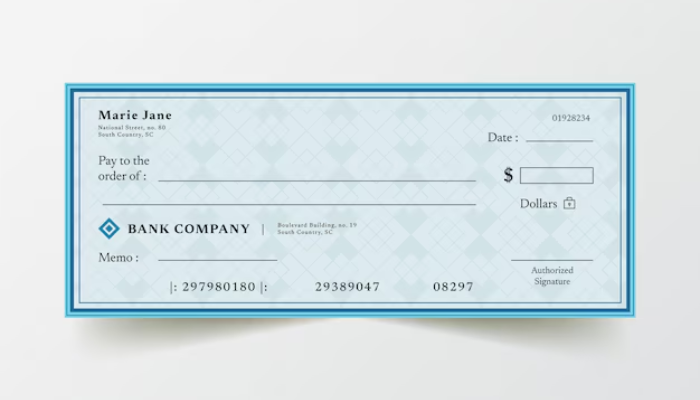
When it comes to designing and presenting content, one of the key aspects that can significantly impact the user experience is the layout. Whether you’re working on a website, a printed brochure, or a mobile app, the layout of your content can make or break your project. This is where the concept of check layout comes into play. In this guide, we will dive deep into what a check layout is, why it is important, and how you can effectively implement it in your projects. By the end of this article, you’ll have a solid understanding of how layout checks can improve both the aesthetic appeal and functionality of your designs.
What is Check Layout?
Check layout refers to the process of reviewing and evaluating the design structure of a project to ensure that it meets the desired standards of usability, clarity, and aesthetic appeal. This process typically involves examining the placement of elements, such as text, images, buttons, and other components, within the overall design framework.
The purpose of check layout is to identify any issues that might arise from poor alignment, disproportionate sizing, or inconsistent spacing that could potentially compromise the user experience. For example, a website layout might be checked for mobile responsiveness to ensure that the design looks good on different screen sizes. Similarly, printed materials like flyers or posters might undergo layout checks to ensure that the text is legible and the graphics are appropriately scaled.
Why is Check Layout Important for Design Projects?
In the world of design, check layout serves as a critical step in ensuring that your work aligns with professional standards. One of the primary reasons layout checks are so crucial is that they directly impact how the end-user interacts with your content. A well-executed layout ensures that users can easily navigate your design, find important information quickly, and engage with the content without distractions.
For instance, if you’re designing a website layout, a check layout process will help ensure that the navigation is intuitive, content is easy to read, and key call-to-action buttons are prominently placed. For printed projects, it helps guarantee that the text is legible and the visual elements work together harmoniously. A poorly structured layout can confuse users, decrease engagement, and ultimately hurt the effectiveness of your project.
Key Elements to Review During a Check Layout Process
When conducting a check layout, there are several key elements to focus on. Ensuring that each of these components is thoroughly reviewed will help you avoid common pitfalls in design and result in a polished and professional final product. Some of the essential elements to inspect include:
- Alignment: Make sure that all text, images, and other elements are aligned consistently across the design. Misalignment can create a sense of disorganization, making the content harder to read or follow.
- Spacing and Margins: Adequate spacing between elements is crucial for creating a balanced layout. Pay attention to the spacing between paragraphs, around images, and along the edges of your design to avoid a cluttered or cramped appearance.
- Typography: Ensure that the fonts are readable and appropriately sized for the design. Also, check that font styles (bold, italics, etc.) are used consistently to enhance readability.
- Color Scheme: The color scheme should be visually appealing and align with the overall branding or theme of your project. Ensure there is enough contrast for text to be legible against background colors.
Each of these elements contributes to the overall aesthetic and usability of your design, making it essential to conduct a thorough check layout before finalizing any project.
How to Effectively Perform a Check Layout
Performing a check layout is a systematic process that requires attention to detail and a clear understanding of design principles. Here are a few steps to help you perform an effective layout check:
- Step 1: Review the Layout on Multiple Devices: If you’re designing a digital product like a website or mobile app, it’s important to check how the layout appears on different screen sizes and devices. Test the design on mobile phones, tablets, and desktops to ensure responsiveness and consistency.
- Step 2: Use Grid Systems: Implementing a grid system can help ensure that elements are placed uniformly throughout the design. Grids provide a structure that guides the placement of text, images, and other elements, ensuring that the layout is balanced and organized.
- Step 3: Test for Readability: Whether you are designing for print or digital, readability is paramount. Check that the text is legible, and that there’s enough contrast between text and background. Test the layout with different font sizes to ensure accessibility for all users.
- Step 4: Seek Feedback: It’s always a good idea to gather feedback from other designers or stakeholders to identify any issues you may have missed. A fresh set of eyes can often spot alignment or spacing problems that you might overlook after working on the design for extended periods.
Common Mistakes to Avoid in the Check Layout Process
While performing a check layout, it’s important to be aware of common mistakes that can negatively affect your design. Avoiding these pitfalls will help you ensure that your project is both functional and aesthetically pleasing. Some common mistakes include:
- Overcrowding the Layout: Attempting to fit too much content into a small space can lead to a cramped and overwhelming design. Ensure there is adequate white space around elements to allow the design to “breathe” and remain uncluttered.
- Ignoring Mobile Optimization: In today’s digital landscape, many users access websites and apps from mobile devices. Failing to optimize your layout for mobile users can result in a poor experience and decreased engagement.
- Inconsistent Styling: Using too many fonts, colors, or design elements can create a disjointed appearance. Stick to a cohesive style guide that aligns with the overall theme of your project to maintain consistency.
- Skipping Accessibility Checks: Accessibility is a crucial aspect of design that is often overlooked. Make sure that your layout works for people with disabilities, including those with visual impairments or other accessibility needs.
By being mindful of these common mistakes, you can avoid errors that might diminish the quality of your design.
Conclusion
In conclusion, check layout is a vital step in the design process that helps ensure your project is visually appealing, functional, and user-friendly. Whether you’re designing a website, an app, or a printed brochure, performing a layout check allows you to refine your work and create designs that resonate with your audience. By focusing on key elements like alignment, spacing, typography, and consistency, and by avoiding common mistakes, you can ensure your project reaches its full potential. So, take the time to review and perfect your layout—your users will thank you for it.
Frequently Asked Questions (FAQs)
- What is check layout in design?
- Check layout refers to the process of reviewing a design to ensure all elements are properly aligned, spaced, and visually appealing.
- Check layout refers to the process of reviewing a design to ensure all elements are properly aligned, spaced, and visually appealing.
- Why is check layout important for websites?
- For websites, check layout ensures that content is displayed clearly, is responsive across devices, and provides a positive user experience.
- For websites, check layout ensures that content is displayed clearly, is responsive across devices, and provides a positive user experience.
- How do I perform a layout check on a mobile app?
- Perform a layout check on a mobile app by testing it on various screen sizes and ensuring the elements scale and remain readable on smaller devices.
- Perform a layout check on a mobile app by testing it on various screen sizes and ensuring the elements scale and remain readable on smaller devices.
- What is a grid system in layout design?
- A grid system is a framework that helps in aligning elements consistently and maintaining a balanced structure in design.
- A grid system is a framework that helps in aligning elements consistently and maintaining a balanced structure in design.
- How do I ensure readability in my layout?
- Ensure readability by selecting appropriate fonts, font sizes, and colors that offer sufficient contrast against the background.
- Ensure readability by selecting appropriate fonts, font sizes, and colors that offer sufficient contrast against the background.
- What are some common layout mistakes?
- Some common mistakes include overcrowding, inconsistent styling, ignoring mobile optimization, and neglecting accessibility.
- Some common mistakes include overcrowding, inconsistent styling, ignoring mobile optimization, and neglecting accessibility.
- Can check layout improve user experience?
- Yes, a well-checked layout significantly improves user experience by ensuring ease of navigation, clarity, and visual harmony.
- Yes, a well-checked layout significantly improves user experience by ensuring ease of navigation, clarity, and visual harmony.
- Should I use a check layout for print designs?
- Yes, check layout is essential for print designs to ensure that the text is legible, images are correctly sized, and the overall design is aesthetically pleasing.
- Yes, check layout is essential for print designs to ensure that the text is legible, images are correctly sized, and the overall design is aesthetically pleasing.
- How often should I perform a check layout?
- Perform a check layout at various stages of your design process, especially before finalizing the project or launching.
- Perform a check layout at various stages of your design process, especially before finalizing the project or launching.
- What tools can assist with layout checks?
- Tools like Adobe XD, Sketch, and Figma offer features to help align and check the layout of your design projects effectively.



